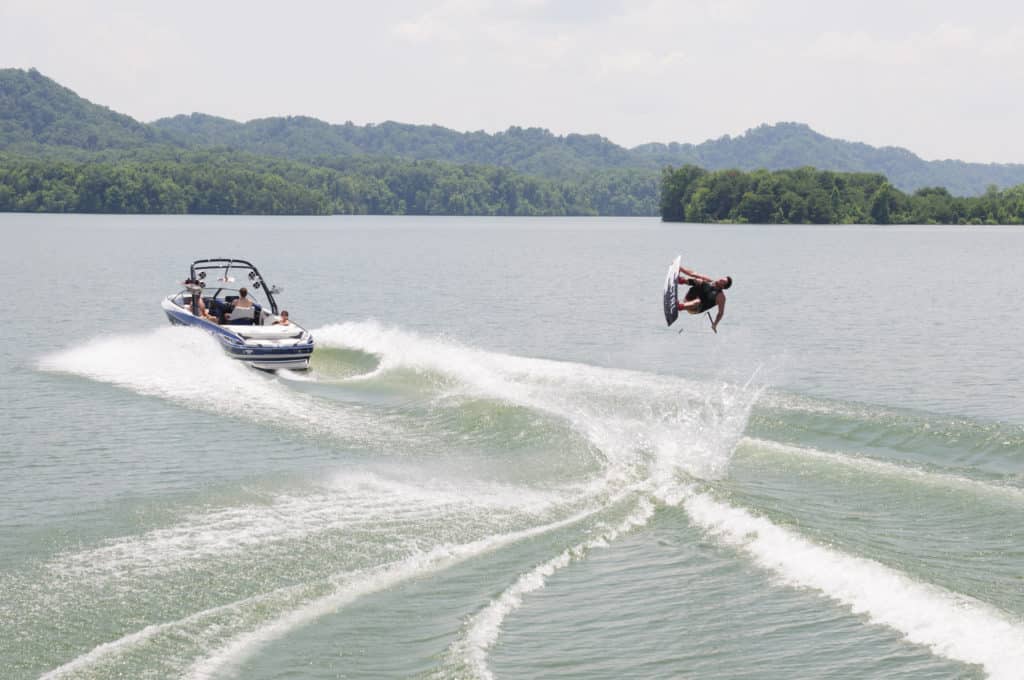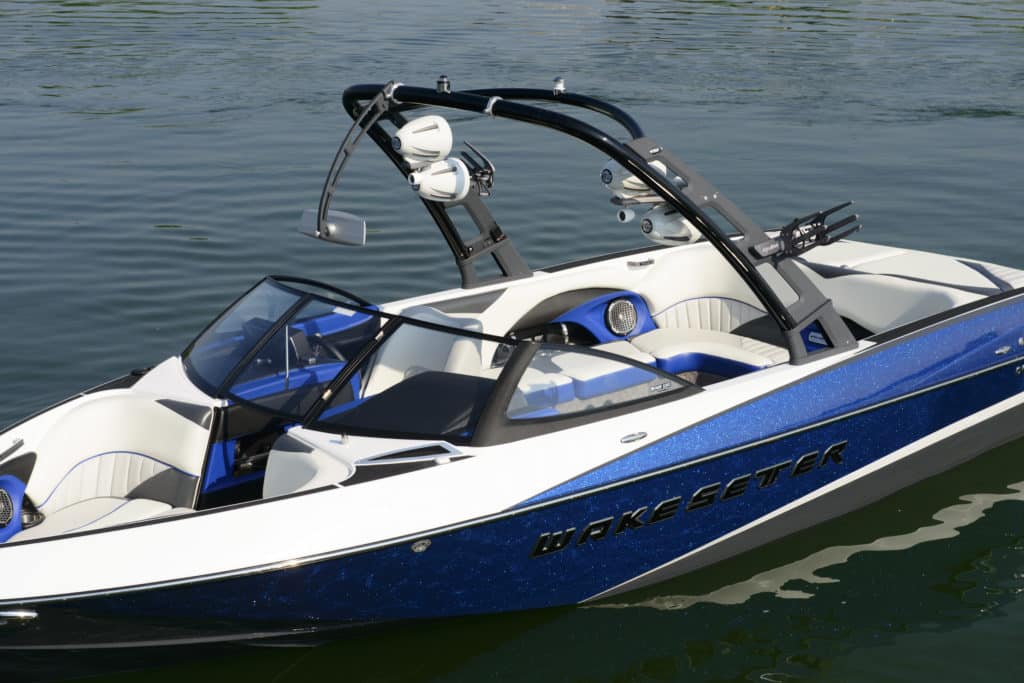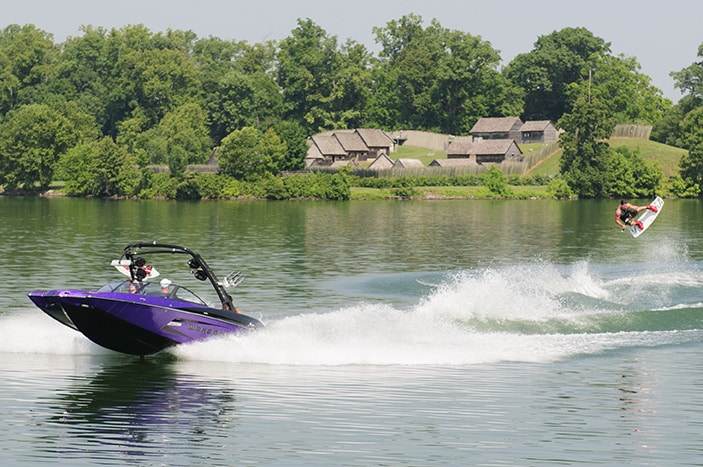


One reason boaters love sterndrives is that their deep-V hulls make the ride relatively smooth in rough conditions, whether you are dealing with coastal chop or just a wake-churned lake. Inboards? Conventional wisdom says they’re best left to calmer inland lakes, as their shallower transom deadrise will deliver a far too firm and bumpy ride. It’s a misconception that may lead some buyers to shy away from inboard propulsion…and one we’re going to put to rest for good.
While it’s true older, skiing-focused inboards may not always be the best match for choppy conditions, modern-day inboards feature deeper-V hulls than their ski-happy forefathers, along with specific hull traits designed to soften the ride and satisfy a far more diverse audience. They’re also just plain bigger. Today’s wider beams and deeper freeboards may seem to target passenger capacity and comfort, but they also naturally increase a V-drive’s rough-water presence.
It’s also important to note that the comfort of a ride isn’t determined just by a steeper transom angle. Playing a far greater role is the position at which water breaks under the hull. Look closely the next time you see a sterndrive and an inboard pass. The sterndrive typically runs with the bow higher out of the water, breaking the water farther aft along the hull. The inboard, however, runs at much less of an angle, breaking the water farther forward on the hull. Typically, the deadrise angle at this position can be as much as 30 degrees or more, a figure that is more similar to that of a comparable sterndrive.
Proper driving technique in chop and rollers can also go a long way in delivering a dry and comfortable ride. One simple suggestion is just to slow your speed, giving the driver more time to react to changing conditions. Keep your hand on the throttle, and change your speed to keep your boat as secure and comfortable as possible when tackling larger waves. Though it may seem safest to tackle waves head on, it often results in a rougher ride, and may risk dipping your bow into the following waves. In tougher conditions, consider aligning your boat to the waves at more of a 45-degree angle off the bow or stern. You’ll rock and roll a little more from side to side, but you’ll alleviate much of the jarring and impact. In fact, in truly difficult situations you may want to tack like a sailboat, trading a direct line to your destination for a safer, more controlled course.
If weighted with ballast for wakeboarding or wake surfing, realize you won’t have as much freeboard. As a result, turns should be kept wider and more gradual. Likewise, avoid chopping the throttle when you want to stop. Instead, smoothly decelerate to keep the boat’s following wave safely off the transom.
And while you’re underway in those tough conditions, take a moment to just stop and listen. Rough water is a great environment to show off an inboard manufacturer’s renowned fit and finish.









